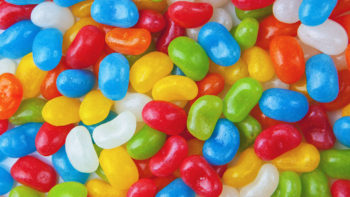There’s nothing that seems more wholesome than mom baking a batch of cookies for an after-school treat.
And the truth is, all other things being equal, a homemade cookie every now and again isn’t going to do you any harm. The problem is, all other things are not equal.
Aside from the sugar you might get in that cookie, sugar sneaks into a lot of your food — ones you might not even expect — under many names and in hidden amounts.
Sugar, in the amount that we as a culture consume it, is one of the deadliest substances we’ve come across. In the unprecedented quantities we find it in our diets, sugar is contributing to the worst preventable diseases humanity is suffering from: heart disease, cancer, liver disease, and diabetes.
It’s an unmitigated disaster for the general public, most of whom remain unaware of how much they’re eating and what to do to improve their situation.
Our Life with Sugar
Although sugar has been refined for about 2500 years, it’s only been in the last 400 years that humans have eaten it in any kind of large quantities.
And while humans generally rely on sugar or glucose metabolism for their energy needs, pre-modern people got their glucose from whole versions of carbohydrate rich sources like seasonal fruits, as well as roots and other edible plants.
Much of their energy may also have been derived from the fats that came along with eating meat, but even as far as their sugar intake was concerned, this was a type and amount that our body had the bandwidth to process into a steady form of energy to power our daily physical and mental activity.
In the year 2000 in the U.S., average sugar consumption was nearly 70 kilograms per person per year — that’s almost 150 pounds. Compare that to the 2 kg per year in modern hunter-gatherers we use to compare to what our diets may have been like in prehistory. And the honey that is responsible for most of their intake would only have been available to gather seasonally.
While our bodies can process and buffer some sugar every day — we have metabolic cycles that are designed to handle it — our problem is that sugar is so widely available in both obvious and hidden sources that our physiology breaks down in the face of more than we can deal with.
Sugar presents real dangers to our physiology and health not just because we can only safely and effectively consume so much of it, but also because its use has been over-normalized. We take for granted how much sugar we can consume and how much sugar we do consume — not just in ice cream, candy and soda, but in commercially produced soups, sauces, dressings, yogurt and flavored water.
Everyday products that are part of regular food consumption contain amounts of sugar that, when added up over the course of a day, equal half a pound for the average American.
So let’s take a look at some of the reasons we find ourselves consuming so much and what all of this is doing to us.
Sugar’s Secret Identity
One of the first things to know is that sugar goes by many names.
Sugar has more than 50 common names ranging from the ones you know — sugar, cane sugar, evaporated cane sugar, high fructose corn syrup — to less obvious names like brown rice syrup and fruit juice concentrate, to the frankly obscure, like diatase and galactose.
Food companies will often divide the sugar in their products into multiple forms.
The result of this is that the sugars fall lower and lower on the list of ingredients, as the lists are built in the order of the quantity of the ingredient as a part of the whole. That means that if sugar would have been the first ingredient on a list, breaking it up into 4 or 5 types of sugar pushes each one much further down the list, possibly giving you the impression that sugar occurs in much smaller amounts than it actually does.
What’s more, research tells us that sugar has been added to practically every processed food. Approximately 80 percent of the 6 million consumer packaged foods in the United States have added caloric sweeteners. Our ability to avoid it, even if we want to, is severely limited.
“Healthy” Sugars
There are some forms of sugar that have “good” reputations that they don’t deserve. Things like honey, agave and maple syrup are often thought of as healthy forms of sugar, when in reality they are as bad or sometimes worse than your standard table sugar.
Sugar is sugar, whether it is white and granulated or golden and flowing. Just because your ancestors could have had it seasonally if they could beat back the bees doesn’t mean you should have the same thing every day in your tea.
Sugar is all broken down into single molecules of glucose before it gets into your blood. Your body isn’t particularly biased about where it comes from.
That is, until you consider fructose and agave.
Considered in some circles as more “natural” than other forms of sugar, agave is not only a highly refined source of sugar, it contains more fructose than the vilified high fructose corn syrup.
Agave nectar is made from the starchy root bulb of the agave plant. The process of converting it to syrup is similar to the process of turning corn into high fructose corn syrup. Not only that, but agave is 70% fructose or higher, compared to the 55% in high fructose corn syrup. So which is really the high fructose sweetener?
Why should that matter? Isn’t fructose like fruit?
Well, yes and no. Concentrated fructose is not a part of fruit. What you find in fruit is called levulose and is not only bound to other sugars, but enzymes, vitamins, minerals, fiber and pectin.
Fructose is a refined version. Why is this a problem? Well, for starters, let’s talk about where they are processed. Levulose is processed in the intestine, while fructose is processed exclusively in the liver.
Sugars that are processed in your intestines enter your bloodstream and are available for energy. Sugars that are processed in your liver are immediately converted to triglycerides and stored as body fat. Triglycerides are that number that your cardiologist is forever trying to get you to lower.
Yes, fructose and agave are terrible for your cholesterol.
Because it doesn’t enter your bloodstream, it doesn’t raise your insulin levels. This led people to think it was good for diabetics. Wrong again.
Fructose inhibits the hormone that tells your body you are full, leading you to want to eat more. This not only leads to weight gain, but also in the most dangerous form of fat — visceral fat, the fat that is stored in your abdominal cavity.
This is not “spare tire” fat — this is fat you don’t see. It surrounds the organs in your abdominal cavity and is associated with metabolic diseases like heart disease and diabetes as well as a worsening of blood sugar control and insulin sensitivity.
This is all to say that yes, sugar is sugar, but some of it is even worse than sugar.
What Sugar Is Doing To Us
Sugar isn’t harmful just because it’s got calories and zero nutritional value. It is bad for you because it makes you fat. It’s dangerous because it has addictive properties and is actually toxic when consumed in excess.
Overconsumption of sugar is leading to obesity, diabetes and heart disease.
Today’s children are not expected to have a longer life expectancy than their parents.
One in three U.S. adults is obese.
Sugar makes you hungry longer. It’s a part of your behavioral reward system — sugar stimulates responses that tell you to “do that again.”
Consumption releases dopamine and drives you to repeat the experience. The more you activate it, the more you lose control over it — cravings increase and tolerance to sugar decreases.
The same dopamine response is triggered by a healthy meal, but repeat the same meal day in and day out, and the dopamine response that was triggered by the novelty of the meal wears off. That response, it is believed, comes from the seeking of variety. We need to eat a variety of foods to get that same dopamine response.
Sugar, on the other hand, does not see its response taper off. Sugar will keep rewarding you, more like a drug like alcohol, nicotine or heroin. This is why some people seem to be hooked on sugar. They are hooked on the reward that eating sugar produces.
As far as damage is concerned, sugar consumption both taxes your liver and fires up your pancreas in order to deliver insulin to deal with the sugar in your blood. More sugar equals more work for the pancreas, and overworking the pancreas leads to insulin resistance, which leads to heart disease, liver disease, diabetes, and metabolic disorder.
Does this mean we can’t eat any sugar?
A sweet treat every once in a while won’t hurt you. Fruit is a perfectly reasonable thing to include in your diet.
The dangers of sugar come in large part from the processed food industry. It is an industrial problem.
Sugar is not only included in most processed foods, but is processed into forms that the body barely recognizes. Highly refined sugar is also available for daily consumption.
The real dangers come from our lack of awareness:
- Of how much sugar is in how much of what we are eating
- Of how much it controls behavioral mechanisms that encourage more sugar eating
- Of how it’s processed in the body and how much it taxes our system when we eat it
A little sugar is not going to kill you.
But sugar at the level we are blindly consuming it in our culture is leading to the high rates of preventable diseases and conditions that all of us see in and around our lives every day.
So enjoy a dessert on a special occasion. But keep a very sharp eye out for the numerous hidden sources of sugar in the foods you buy every day and stay sharply tuned to the signals your brain sends that are not in your best interest.
By learning to control that impulse, you weaken it. You can reduce your cravings by not feeding them.
And by reading labels and staying aware of all the places sugar can appear, you can dramatically reduce your intake of sugar on a daily and yearly basis.
And that will not only reduce the danger of sugar in your life, it will lead to a longer and healthier one.







